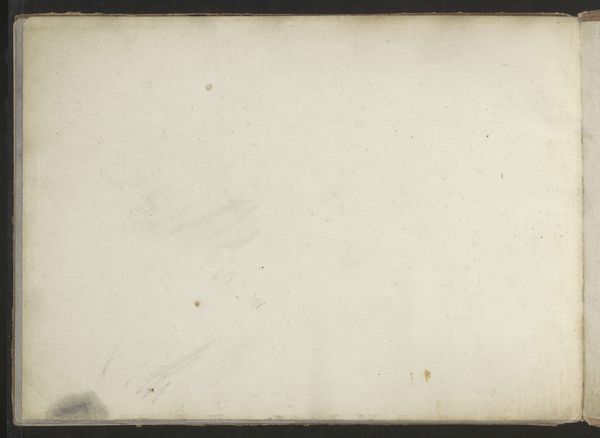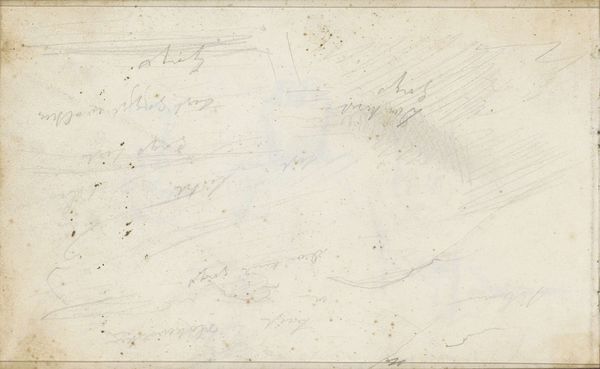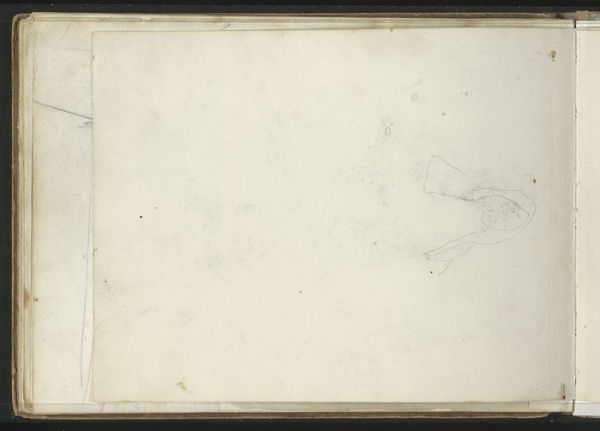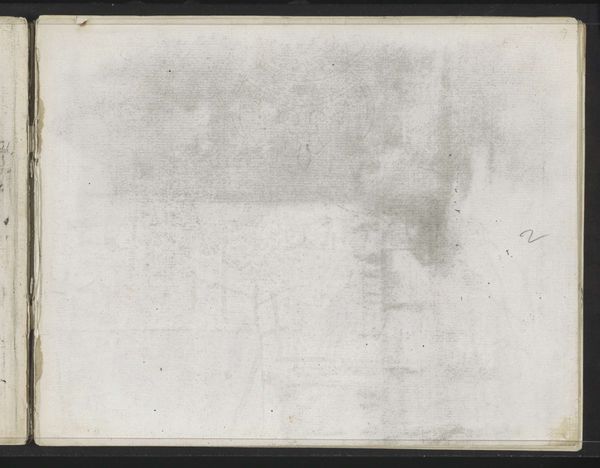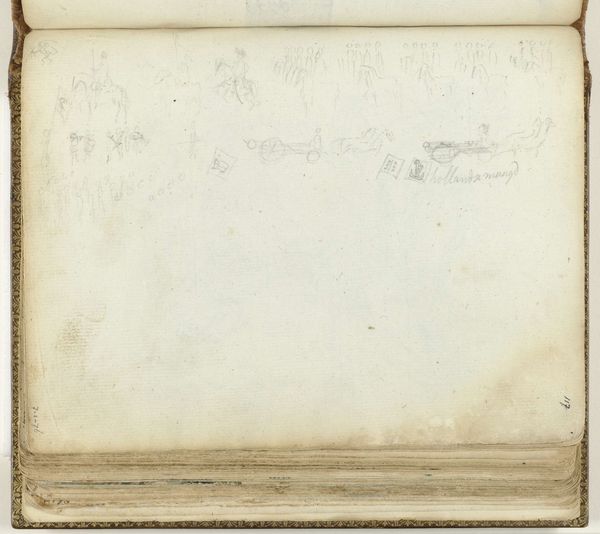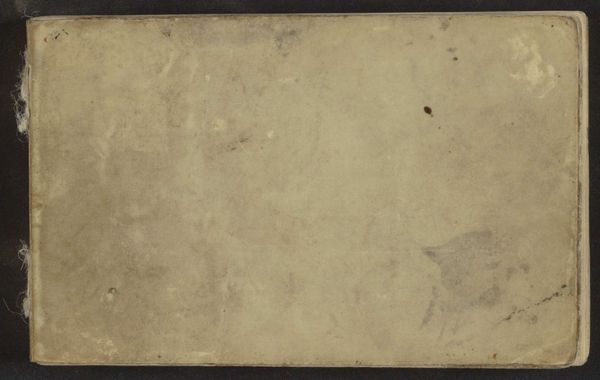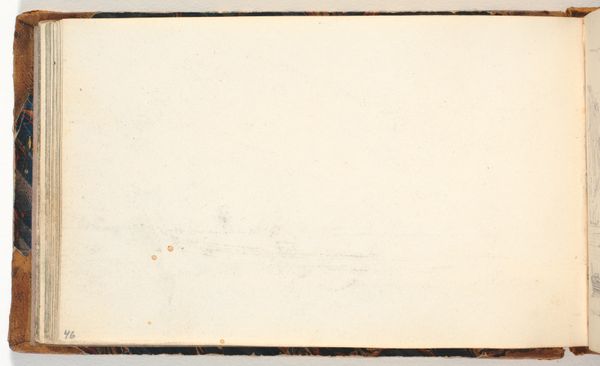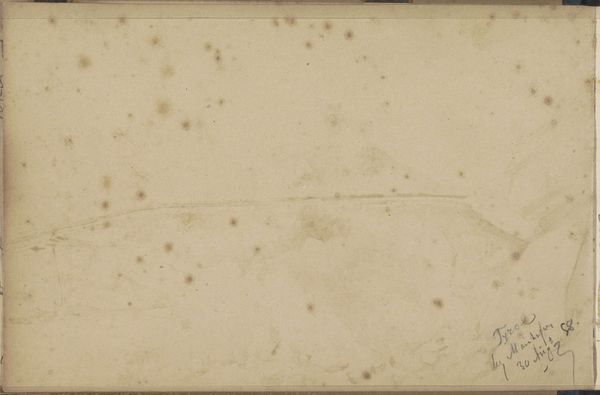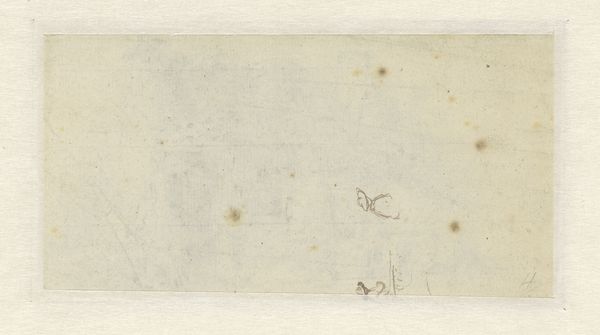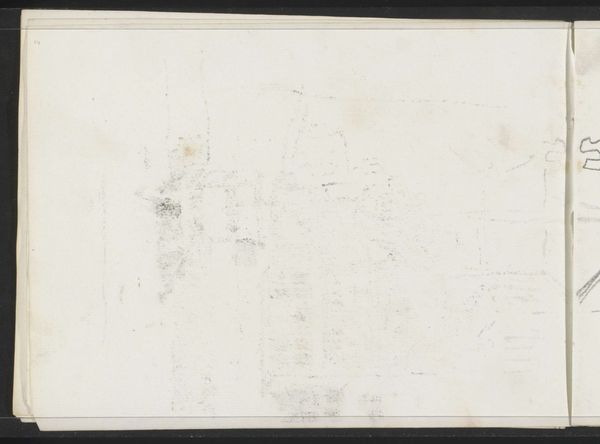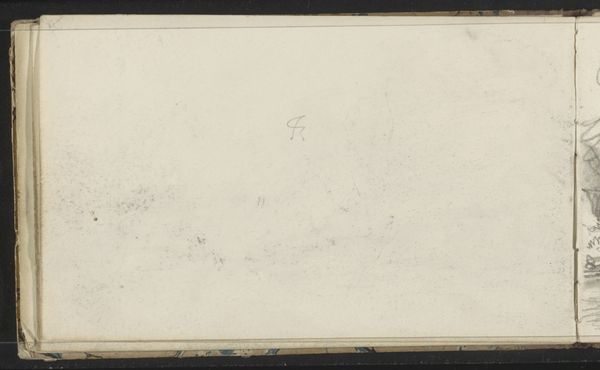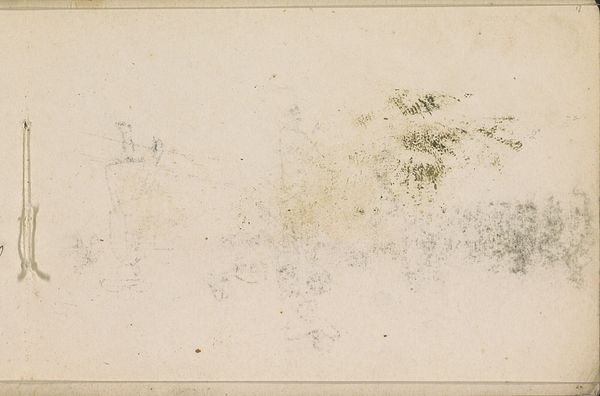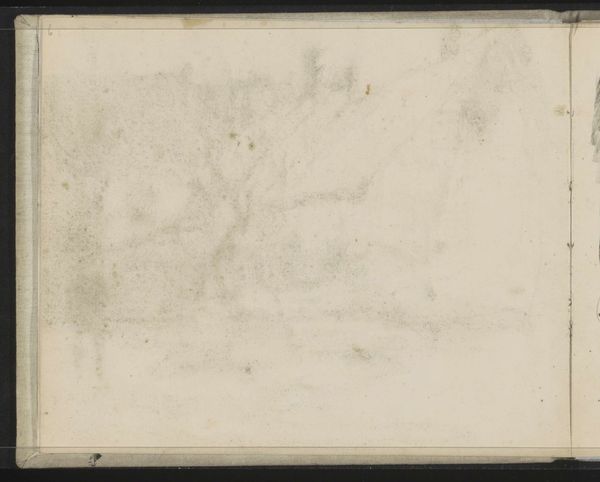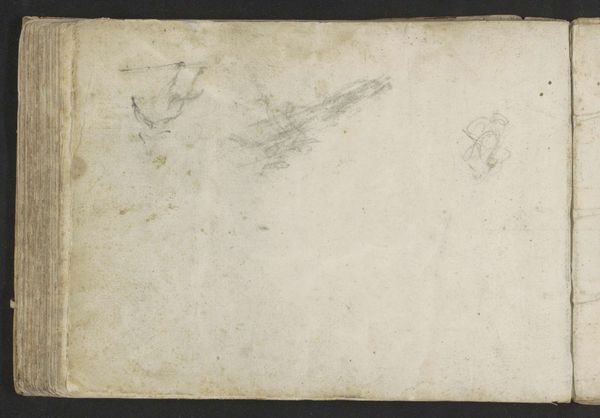
drawing, textile, paper, ink
#
drawing
#
water colours
#
dutch-golden-age
#
textile
#
paper
#
ink
#
coloured pencil
#
genre-painting
#
watercolor
Dimensions: height 155 mm, width 211 mm
Copyright: Rijks Museum: Open Domain
Editor: Here we have Gesina ter Borch's "Gedicht waarin Simeon God looft," a drawing from around 1646-1650, composed of ink, watercolor, and colored pencil on paper and textile. It seems so fragile and intimate, almost like a personal diary entry. How do you interpret this work, especially considering its historical context? Curator: It’s more than a diary entry. It’s a window into the cultural landscape of 17th-century Netherlands, particularly for women artists. Gesina ter Borch wasn't just creating art; she was actively participating in intellectual and religious discourse through a traditionally "feminine" medium like textile and paper. Notice the integration of text and image—the poem itself. Do you see how that complicates the usual power dynamics of visual art? Editor: I see what you mean. The poem gives voice and authority to the image. But, given the religious theme, does that limit her artistic expression in any way? Curator: Perhaps, or perhaps it empowers her in different ways. The religious theme was not necessarily limiting but provided a framework for exploring complex emotions and social commentaries. Considering that artistic and intellectual avenues for women were rather constrained, the poem becomes a powerful act of resistance, a means to negotiate personal expression within those limitations. Think of the subtle acts of rebellion embedded in supposedly "domestic" art forms. Editor: So, the act of creating itself becomes a form of agency? Curator: Precisely. We might consider this work a testament to the quiet yet radical ways in which women throughout history have navigated patriarchal structures, embedding their voices and perspectives in the fabric of everyday life, both literally and figuratively. Editor: I hadn’t thought about it that way before. It gives the piece so much more depth. Thank you! Curator: My pleasure. Seeing art as activism and seeing activism *in* art opens up new avenues for interpretation and understanding.
Comments
No comments
Be the first to comment and join the conversation on the ultimate creative platform.
